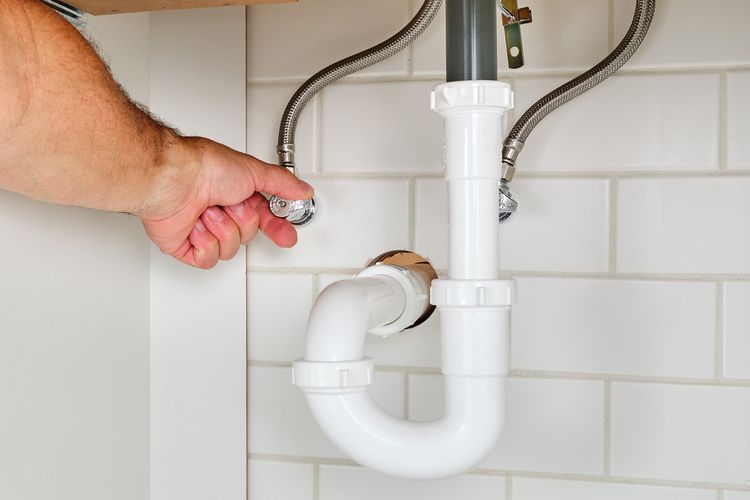
The plumbing system in your residence is equipped with several water shutoff valves that can halt water flow to particular sections or to the entire house in case of emergencies, maintenance, or renovations. If you’re planning to replace a malfunctioning valve or install new ones, it’s essential to understand which valve type is most suitable for your home and circumstances.
When undertaking repairs or installing new plumbing, you may encounter various kinds of water shutoff valves. In the following sections, we will explore the functions of water valves, the different types of shutoff valves available, and the key considerations to keep in mind when selecting the right one for your project.
Contents
The Function of Water Shutoff Valves
Shutoff valves for water are plumbing components that manage the flow of water, allowing for control over specific fixtures like sinks and toilets, as well as the entire water supply of a household.
The typical varieties of water shutoff valves used in residential settings include ball valves and gate valves, which are typically located on main water lines. Additionally, there are angled and straight shutoff valves used for fixtures such as faucets, toilets, and appliances, as well as globe valves and stop-and-waste valves, which are generally installed outdoors.
Valves typically operate in one of two manners: either a solid internal component turns to either allow or obstruct water flow, or a stem equipped with a washer or seal presses down to halt the flow of water.
As a property owner, it’s crucial to locate the primary water shutoff valve for your residence, as this allows you to stop the water supply completely. Additionally, you should familiarize yourself with the other valves located both inside and outside your home. These valves regulate the water for your garden hoses, irrigation systems, and all the fixtures that water is supplied to throughout your property.
When renovating and installing a new sink or toilet, addressing issues with a washing machine, or fixing a dripping faucet, it’s essential to understand how to turn off the water supply to that particular location and to identify the appropriate type of water shutoff valve that works with your new or malfunctioning fixture.
The Connection of Shutoff Valves
A crucial aspect to take into account when choosing the appropriate water shutoff valve for your project is the type of connection it requires. Depending on the pipe’s material and type to which the valve will be attached, the water pressure it must endure, and the positioning of both the pipe and valve, it is essential to select a valve that has a matching connection type to ensure a watertight seal.
The primary categories of valve connections found in home plumbing systems include:
- Threaded valves serve as connectors for threaded steel pipes, allowing them to be screwed in place. These pipes are typically located on the primary water supply line as well as in various indoor installations.
- Compression fittings are commonly utilized for copper and plastic piping and achieve a secure seal through the tightening of a nut and a ring.
- Push-in or push-to-connect valves offer a simple installation process and are commonly utilized in water supply lines for fixtures and appliances. They are compatible with copper, PEX, and PVC piping.
- Soldered connections, often found in older residences featuring copper plumbing, involve securing valves to pipes through the application of heat. This process should be performed exclusively by a qualified professional.
Materials for Shutoff Valves
When considering your water shutoff valve, it’s important to take into account the material it’s constructed from. Brass is the most commonly preferred option, thanks to its adaptability, affordability, suitability for both indoor and outdoor use, and its long-lasting resistance to corrosion. While stainless steel valves are also suitable for similar environments, they generally come at a higher cost.
In certain conditions characterized by low pressure and low temperatures, like those found in cold water supply systems, plastic valves crafted from materials such as PVC, CPVC, and polypropylene are often employed due to their economical advantages.
Locations of Shutoff Valves
You can find individual water shutoff valves, also known as isolation valves, throughout your house, typically located behind appliances, beneath sinks, and near various fixtures. While it’s important to be aware of these smaller valves, it’s essential to know the location of your main water shutoff valve.
The primary valve for shutting off the water supply is typically located along the main water line. You may find it indoors, such as in a basement or crawlspace, or close to your water heater. Alternatively, it might be situated outside near the water meter, on an exterior wall in warmer regions, or concealed beneath a panel in your backyard.
In and around your home, you may encounter seven typical varieties of water shutoff valves. Refer to the following guide to discover the locations and appearances of each type.
Spherical Valve
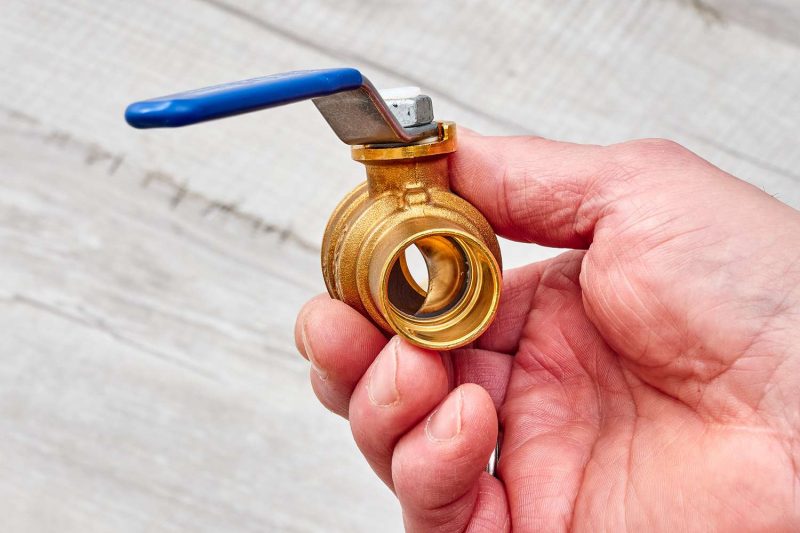
A ball valve is typically employed for a primary water line. These are substantial metal valves, often featuring lever handles, intended for rapid water shut-off. Inside, there is a small ball with a central hole that pivots 90 degrees to control water flow, opening and closing as the valve handle is operated.
Shut-off Valve
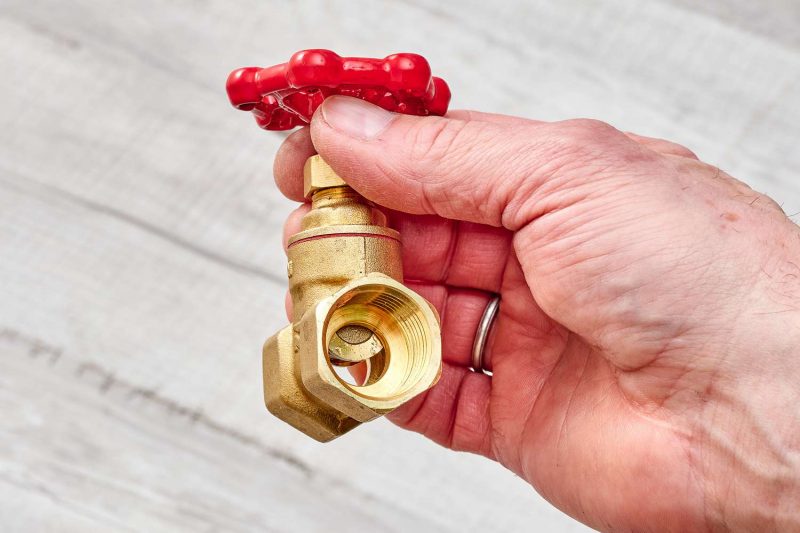
A different kind of valve that you might encounter on your primary water line is a gate valve. This valve operates by using a metal gate that moves up and down in response to the rotation of a circular handle, thereby regulating the water flow. While gate valves are predominantly found in industrial settings, you may also come across them on significant water pipes throughout your property or in the vicinity of your water heater.
Spherical Valve
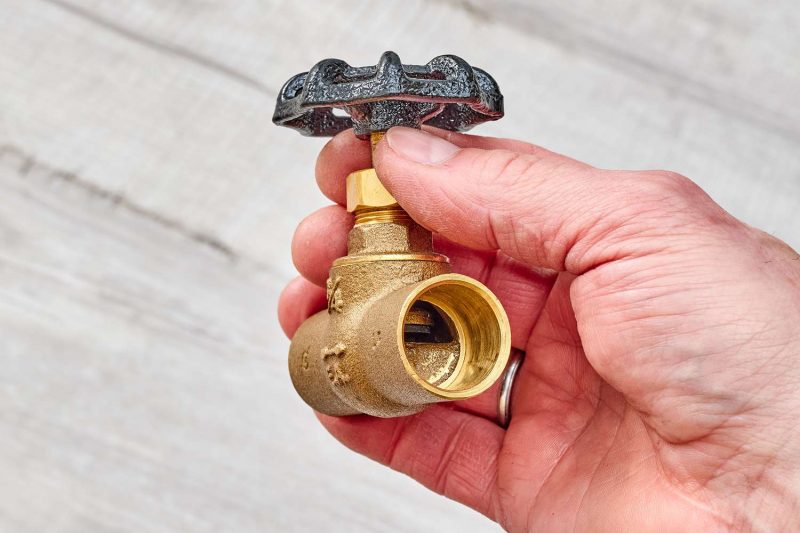
Commonly used with garden hoses and water faucets, a globe valve is a robust and relatively expensive metal valve that enables a gradual adjustment of water flow, rather than just a simple on/off mechanism.
Angled Shutoff Valve for Fixtures
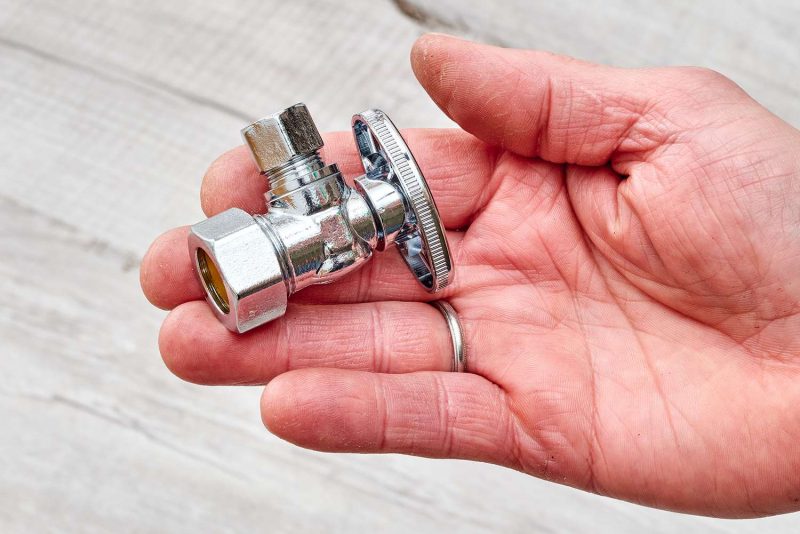
Fixture shutoff valves are the most prevalent type of valves found in residential settings, typically located near sink faucets, toilets, and other water fixtures. Angled shutoff valves are commonly employed when a water pipe emerges from the wall and must be directed vertically into a fixture.
Tip
Every fixture in your home, such as sinks and toilets, ought to be equipped with its own shutoff valve to regulate the water supply specifically to that fixture. This setup enables you to carry out repairs or replacements without disrupting the water supply to other parts of the house.
Straight Shutoff Valve for Fixtures

Similar to an angled fixture shutoff, a straight shutoff valve is a cost-effective metal valve that functions in a comparable manner, featuring a small handle. However, it is generally utilized in situations where a water pipe emerges from the floor instead of the wall.
Waste-Prevention Valve
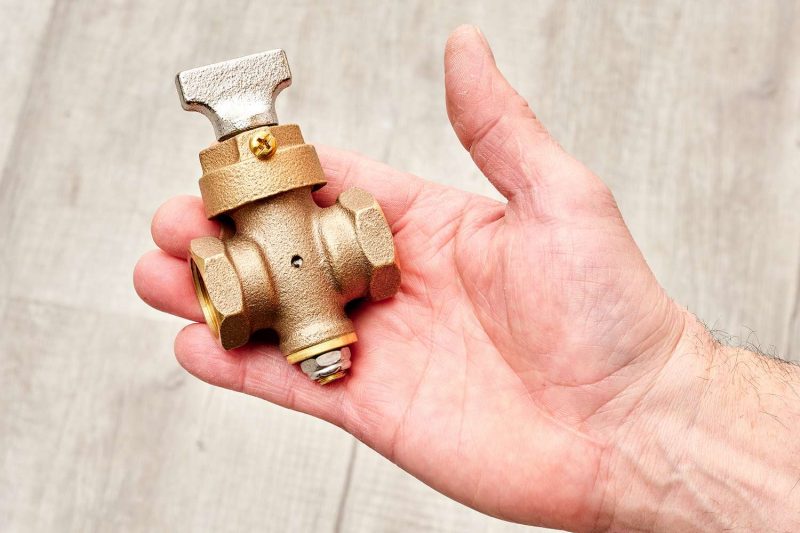
A stop-and-waste valve is located underground within your irrigation system and serves the purpose of preventing the sprinkler lines from freezing during the winter months. This valve, which is made of metal, is relatively durable and comes at a moderate cost. It operates with a key and features two ports: one for controlling the water flow (stop) and the other for enabling the drainage of water from the system (waste).
Valve with a Needle Design
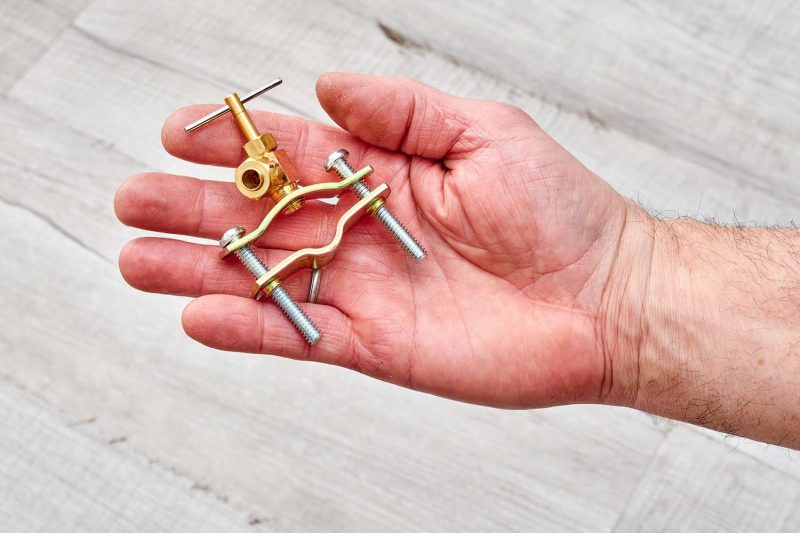
While building codes in numerous regions have prohibited their use because of their inconsistency and insufficient durability, you may still encounter needle valves, also known as saddle valves, linking a water supply line to your refrigerator or water filtration system. If you discover a needle valve in the course of your plumbing work, it is advisable to replace it with a ball valve or a fixture shutoff valve.

